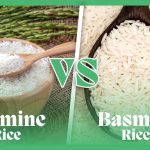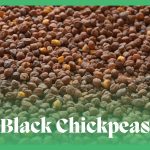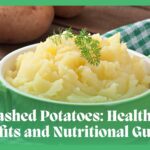Often underestimated in its unpretentious glory, the leafy, green layers of this crunchy and flavorful vegetable hold a universe of nutrients that beg to be uncovered. Cabbage- a notable member of the cruciferous family incorporates essential vitamins, minerals, and antioxidants that play a pivotal role in overall health and well-being.
From its positive role in weight management to protection against chronic diseases, this roundhead rough textured vegetable does it all on its own. So, in this comprehensive guide, we unravel the layers of this unassuming vegetable and discover all of its hidden nutrients and health benefits.
Welcome to the ultimate guide to Cabbage nutrition- a quest to discover the principles of this nutritional richness!
Cabbage:
Cabbage is a proud member of the cruciferous family with broccoli, kale, Brussels sprouts, cauliflower, and bok choy. It originated in the Mediterranean region but was first grown in Western Europe and soon became a part of cuisines worldwide. It is largely produced in China, India, and Russia while Japan, Ukraine, United States, Romania, and Poland also harvest cabbage. Almost 80% of its total production in the United States comes from five states California, Wisconsin, New York, Florida, and Texas.
The edible portion of cabbage is the head that comprises leaves of different shapes, sizes, and textures. It is best grown in cool climates and tolerates frost and freezing temperatures as most of its production occurs in the winter and spring months. Cabbage is one of the most popular vegetables in the world owing to its affordability, availability, and nutritional composition.

Types:
About 400 varieties of cabbage are grown worldwide, which vary in size, shape, texture, and taste. Some of the prominent varieties found almost everywhere are:
Green cabbage:
Green cabbage is the most common variety and has outer dark or pale green leaves, while the inner leaves are pale green or white. Raw green cabbage has a rubbery texture and peppery flavor, whereas the cooked one is soft and sweet. It can be used as thin slices in coleslaw or casseroles, soups, and cabbage rolls.

Red or purple cabbage:
This variety is not as tender as green and white varieties as they take longer to mature. The anthocyanins in these cabbages may change color upon cooking, so adding an acidic agent will bring it back to its original color. The raw pickled red and purple cabbages can also be added to coleslaw and salads.

Savoy cabbage:
Originating from Italy, savoy cabbage has deep crinkled leaves and is the softest and sweet variety. It looks similar to the green cabbage and is great for stuffed cabbage since the leaves are flexible.

Napa cabbage:
Napa cabbage is also called Chinese cabbage. It has yellow-green leaves, oblong heads, frilly leaves, and thick stems. It can be eaten raw and is softer than other varieties.

Nutritional composition:
| Nutrients (100 g) | Amount |
|---|---|
| Macronutrients | |
| Water | 92.2 g |
| Energy | 25 kcal |
| Carbohydrates Fiber Sugars | 5.8 g |
| Protein | 1.28 g |
| Total fats Total saturated fats Total monounsaturated fats Total polyunsaturated fats | 0.1 g 0.034 g 0.017 g 0.017 g |
| Minerals | |
| Potassium | 170 mg |
| Calcium | 40 mg |
| Phosphorus | 26 mg |
| Sodium | 18 mg |
| Magnesium | 12 mg |
| Iron | 0.47 mg |
| Zinc | 0.18 mg |
| Manganese | 0.16 mg |
| Selenium | 0.3 µg |
| Vitamins | |
| Vitamin C | 36.6 mg |
| Thiamine | 0.061 mg |
| Riboflavin | 0.04 mg |
| Niacin | 0.243 mg |
| Panthotenic acid | 0.212 mg |
| Vitamin B6 | 0.124 mg |
| Folate | 43 µg |
| Vitamin A | 5 µg |
| Vitamin E | 0.15 mg |
| Vitamin K | 76 µg |
| Choline | 10.7 mg |
Macronutrients:
Cabbage is a low-calorie and nutrient-rich vegetable offering only 25 calories in 100 grams. It serves as a good source of fiber, as indicated by the fact that 5.8 grams of carbohydrates contain 2.5 grams of fiber. Moreover, cabbage is low in protein (1.28 g) and fats (0.1 g).
Micronutrients:
Aside from its healthy macronutrient content, cabbage has a rich composition of micronutrients.
Among vitamins, it is a good source of vitamins C, K, E, and folate. In minerals, cabbage is abundant in potassium, calcium, phosphorus, sodium, and magnesium.
Anti-nutrients:
Apart from the above essential nutrients, cabbage contains other compounds called “anti-nutrients”. Anti-nutrients affect physical health and metabolic processes and hinder the absorption of essential nutrients.
A way to eliminate these anti-nutrients is to boil, blanch, and ferment the cabbage before consumption.
Tannins:
Tannins found in cabbage prevent the absorption and utilization of proteins and vitamin B12.
Oxalates:
Oxalates interfere with the absorption of calcium and other minerals by reacting with them and forming complexes with these nutrients. High oxalate intake can react with calcium and build calcium oxalate stones that may accumulate in the kidneys to form kidney stones.
Phytic acids:
Phytic acid is a salt in cabbage that reacts with iron, magnesium, zinc, and calcium and forms insoluble complex compounds to prevent them from being absorbed by the body. Phytic acid also disrupts the digestive enzymes, pepsin, and amylase which reduce the digestion of protein and starch.
Cyanide:
Cyanide may not be present in high amounts; however excess consumption may interfere on the cellular level in the body by disrupting the body’s energy production process.
Role in human nutrition:
Cabbage offers an array of health benefits to the human body. Following are some of its potential roles in human nutrition:
Reduces inflammation:
While acute inflammation is not a cause of concern, chronic inflammation is associated with cardiovascular diseases, cancer, diabetes, and obesity. Cruciferous vegetables like cabbage reduce inflammation in the body as they are home to various antioxidants and phytochemicals.
High intake of cruciferous vegetables is associated with anti-inflammatory activities by reducing pro-inflammatory biomarkers (TNF-α, IL-1β, and IL6) (1).
Anthocyanin pigment is abundant in red cabbages and is responsible for giving red color. They are the natural antioxidants that help fight the pro-inflammatory biomarkers in the body. A study showed positive effects of red cabbage on pro-inflammatory biomarkers in mouse models with inflammatory bowel diseases and Chron’s disease (2).
Other phytochemicals and antioxidants found in cabbage are sulforaphane, dolymethane, ascorbigen, and others that contribute to reducing inflammation.
Improves digestion:
The crunchy leaves of cabbage are home to both types of fiber- insoluble and soluble.
The insoluble fiber in cabbage helps improve digestion by providing bulk to stool and improving bowel movements.
Soluble fiber in cabbage helps improve digestion by increasing the number of good bacteria and fueling them. These gut bacteria protect the immune system and produce essential nutrients like Vitamins B12 and K2. This is especially true for the consumption of fermented foods such as kimchi and suarkraut.
Prevents cancer:
It has been reported that cruciferous vegetables like cabbage, kale, broccoli, Brussels sprouts, and cauliflower have anti-cancer properties due to the presence of sulfur-containing compounds like isothiocyanate- a product of glucosinolates. These compounds fight cancer cells by inducing death and stopping them from binding to the DNA and RNA of active cells.
Cruciferous vegetables have been extensively studied in terms of their significant effects on lung, pancreatic, colorectal, stomach, ovarian, breast, and bladder cancer.
Among the family of cruciferous, cabbage has displayed protective effects on breast, colon, pancreatic, and rectal cancer. A case-control study on Polish women showed that consuming red, raw, and cooked cabbage significantly reduced the risk of breast cancer (3). Similarly, an epidemiological review concluded that consuming cruciferous vegetables like cabbage is associated with reduced prostate cancer risk (4).
Heart health:
The oxidation of LDL in the blood forms foam cells and atherosclerosis (hardening of arteries) and increases the risk of cardiovascular diseases. Since cabbage is rich in antioxidants, it protects the heart by preventing lipid peroxidation. This was confirmed in a study where the participants consumed red and black cabbage for two weeks; their results showed a reduction in LDL levels, total cholesterol, and oxidized LDL.
Similarly, the red and black cabbage also increases the levels of beta-carotene and lutein which may also help reduce oxidized LDL levels in the blood (5).
Type 2 diabetes:
The prevalence of diabetes worldwide is increasing rapidly, impacting 422 million people, mainly those residing in middle and low-income countries.
A diet rich in cabbage may lower your chances of developing type 2 diabetes. The major anti-diabetic components in cabbages are vitamins C, K, and E, fiber phenolic compounds, anthocyanins, and glucosinolates (6).
Blood clotting and bone health:
Cabbage is a good source of Vitamin K incorporating 76 µg in 100 grams. Vitamin K is responsible for proper blood clotting and bone health. Without it, you would be at high risk of developing bone conditions like osteoporosis.
A small tip: since Vitamin K is a fat-soluble vitamin, include a small amount of fat while consuming cabbage like beef, fish, or oil-based salad dressings in salads. These fats will help absorb your vitamin K efficiently.
Iodine absorption:
Cabbage is naturally a good source of iodine minerals. Its deficiency can cause malfunction of the thyroid gland, goiter, hypothyroidism, and nervous system.
Cabbage consumption reduces the deficiency of iodine and iodine causing disorders such as proper functioning of the thyroid gland and nervous system.
Skin and wound healing:
The vitamin C content of cabbage helps promote youthful skin and collagen by protecting against UV radiation and aging signs. The sulfur in cabbage helps produce protein keratin which is beneficial for healthy skin, hair, and nails.
Furthermore, Vitamin C also helps in wound healing, strengthens the nervous system, and helps absorb iron- a mineral for hemoglobin production.
Lowers blood pressure:
Potassium, an important mineral found in cabbage, is responsible for lowering blood pressure by counteracting the effects of sodium.
Potassium helps relax the blood vessel walls and excrete the excess sodium out of the body in urine, thereby lowering the blood pressure and reducing the risk of heart disease.
Adverse effects:
The rich nutritional content of cabbage allows us to consume it regularly; however, it may cause undesired effects in some individuals. Some of the prominent side effects of consuming cabbage are:
Flatulence:
A side effect that you may have experienced at least once in your life after consuming cabbage is flatulence. This is due to carbohydrate raffinose and fiber in cabbage that humans cannot digest. These undigested carbohydrates are fermented by the gut microbiota which produces gases leading to bloating and flatulence.
Thyroid gland dysfunction:
Cabbage contains compounds called isothiocyanate, goitrin, and thiocyanate, collectively known as “goitrogens” that prevent the formation of thyroid hormone and disrupt its functioning. Although this condition is rare and only occurs in people who already have a thyroid condition or are on thyroid medication, however, reducing its consumption is the right way to go.
Thromboembolic disease:
Cabbage might not be suitable for individuals with thromboembolic disease; a medical condition when a blood clot is formed in a deep vein. These patients undergo anticoagulant therapy and take its medications. Since the function of Vitamin K abundantly present in cabbage is blood coagulation, its consumption should be reduced.
Phytochemicals in cabbage and their health benefits:
Phytochemicals are bioactive compounds produced by plants to protect against fungi, bacteria, and plant-based viruses. They have been extensively studied in terms of their beneficial effects on human bodies. Some of the active phytochemicals found in cabbage are:
Phenolic compounds:
Phenolic compounds form a group of secondary plant metabolites including flavonoids, benzoic acid, and cinnamic acid derivatives. Flavonoids have more antioxidant activities than vitamins and carotenoids found in cabbage. Moreover, they inhibit tumor formation, and lipoprotein oxidation, and protect the blood vessels.
Out of all cabbage varieties, red cabbages have the highest amount of phenolic compounds particularly due to the red pigment anthocyanins.
Glucosinolates:
Glucosinolates are naturally occurring plant derivates with chemopreventive properties in the human body. These compounds are not biologically active forms, but it is their sulfur-containing compounds that impart the pungent bitter taste to the cabbage.
White cabbage has the highest amount of this compound, followed by savoy, red and Chinese cabbage.
Isothiocyanates:
This group of compounds is the most crucial for their anti-cancer properties, especially for stomach cancer.
Indoles:
Just like the previous group, indoles invade and inhibit cancer cells and protect against cancer, particularly prostate cancer in men.
Best way to eat:
All four types of cabbages can be eaten both raw and cooked. Green and red cabbage can be enjoyed boiled, steamed, sautéed, grilled, and roasted; while the savoy and napa ones may not hold the prolonged exposures to heat, eating them fresh is a great option.
Following are some of the easy and delicious ways you can enjoy the crunchy and leafy cabbage:
Steaming:
Add water to a pan, put the steamer basket over it, and let the water boil. Put the cabbage in the steamer basket, cover and let it steam for a few minutes. Season with your favorite spices and serve.
Sautéing:
Pour some olive oil into the pan, add chopped cabbage and cook. Stir the cabbage occasionally and cook for a few minutes. Add salt, pepper, garlic, ginger, soy sauce, and sesame oil. Add to plate and serve.
Boiling:
Fill a pot with water, sprinkle some salt, and boil. Add the cabbage wedges and boil for 15 to 20 minutes. After boiling, remove the water from the pot, put it back on the stove, and cook it until the rest of the moisture evaporates. Add butter or oil and coat the cabbage carefully in it.
Roasting:
Preheat the oven. Cut the cabbage into pieces and spread on a greased baking sheet. Add your preferred seasonings and bake until golden. Flip the sides and bake again. Serve.
Grilling:
Preheat the grill. Cut the cabbage into pieces and brush with olive oil and other seasons. Place on the grill cook for 15 to 20 minutes and flip.
After they are golden brown, place them on a baking sheet and roast at 400 F for 15 minutes. Serve.
To wrap it all up, this round green leafy vegetable is a nutrient-rich majesty containing all major vitamins, minerals, and phytochemicals that offer a wide range of health benefits. The benefits range from as big as cancer and cardiovascular disease prevention to as small as its functions in skin and hair health.
References:
- https://doi.org/10.1016/j.jand.2013.12.019
- https://doi.org/10.1016/j.jff.2015.05.046
- https://doi.org/10.3390/ijerph182010795
- https://doi.org/10.1207/S15327914NC421_1
- https://doi.org/10.1016/j.jff.2014.02.020
- https://doi.org/10.1111/1750-3841.15939








